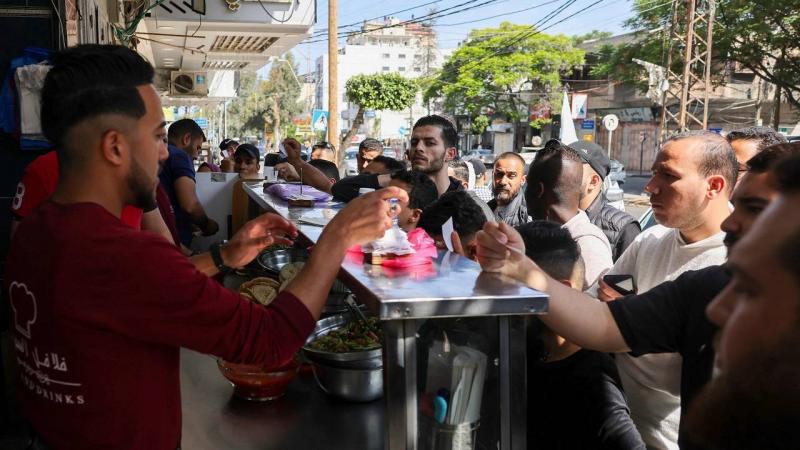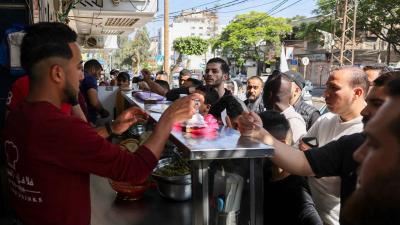The signs of the long-awaited ceasefire, which took effect this Friday morning, began to show in the Gaza Strip, where congestion ruled the scene. The city of Rafah in the south witnessed active movement in the streets, with residents venturing out without fear of shelling or airstrikes, heading to markets to purchase necessities amid anticipation of what may happen after the four-day ceasefire ends. In the north, the Israeli army declared a curfew, considering it a "war zone." They confirmed that the war in the Gaza Strip has not yet ended and that the ceasefire for humanitarian purposes is temporary. Meanwhile, thousands of displaced people returned to their homes in the north, amidst gunfire from Israeli snipers, resulting in one person being injured and arriving at Al-Aqsa Hospital.
The ceasefire allowed for a reasonable flow of aid, including fuel, through the entry of nearly 200 trucks daily, a rate close to half of what was entering the Strip before October 7, estimated by the United Nations at around 500 trucks. This comes after Israeli warplanes gradually distanced themselves from the skies over Gaza since the ceasefire began this morning. Reports confirmed the entry of hundreds of trucks into Gaza through the Rafah crossing and the exit of ambulances transporting the wounded to Egyptian hospitals.
**Humanitarian Situation in the Strip:**
**Displacement:** Approximately 1.7 million of Gaza's 2.3 million residents have fled their homes and displaced internally. The UN Office for the Coordination of Humanitarian Affairs states that "around a million of them are seeking shelter in buildings managed by the Palestinian refugee agency (UNRWA), with at least 156 shelters." The shelters are extremely overcrowded, exceeding capacity by more than four times, after tens of thousands of civilians fled to the southern sector to escape the recent Israeli bombardment. However, the south also faced fierce Israeli airstrikes that killed and injured civilians. Most displaced men, youths, and boys sleep outdoors near the outer walls of the shelters. The UN Office for the Coordination of Humanitarian Affairs noted that "some families have set up tents outside a shelter in Khan Younis."
**Hospitals:** No hospital in northern Gaza is operating normally due to intense shelling and fuel shortages. The UN Office for Coordination of Humanitarian Affairs reports that "eight out of 11 facilities in the south are still operational, but only one is available for performing complex surgeries," according to the World Health Organization. The organization also indicated that it has "requested assistance to evacuate three hospitals in the north, and plans are underway in this regard." Oxfam charity stated, "The number of premature births has increased by nearly one-third over the past month in the besieged sector, with pregnant women suffering from increased stress and psychological trauma."
**Aid Delivery:** The Rafah crossing between Gaza and Egypt has been opened, allowing limited aid to enter since October 21, while other crossings with Gaza remained closed. Yesterday (Thursday), 80 trucks loaded with humanitarian supplies entered from Egypt. Egypt announced that "130,000 liters of fuel and four gas trucks will enter Gaza daily as the ceasefire begins, along with 200 aid trucks."
**Water:** Recent fuel deliveries have enabled the operation of some water wells and pumping stations in southern Gaza. However, the UN Office for the Coordination of Humanitarian Affairs warns of severe concerns regarding drought in the northern sector, where the desalination plant and the water pipeline from Israel are non-operational. Additionally, "wastewater treatment plants are not operating at full capacity due to damage and fuel shortages, and wastewater has been spreading in the streets near Rafah in recent days."
**Fuel:** Israel allows a limited quantity of fuel to enter Gaza from Egypt daily. On Thursday, 75,000 liters were delivered. UNRWA distributes fuel to support food distribution, operate hospital generators, and maintain water and sewage stations, shelters, and other essential services.




